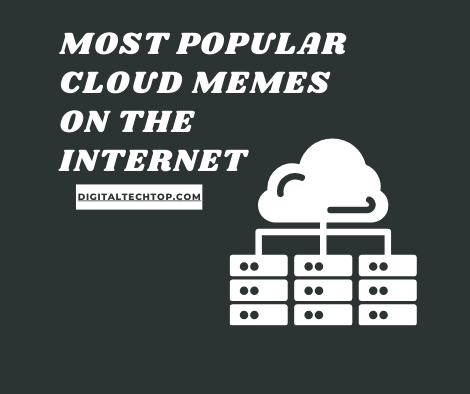What Are the Most Important Features of Blockchain Technology?

If you’re interested in blockchain technology, you’ve probably heard of some of its key features. These include immutability, traceability, and cryptography. In this article, we’ll explore each of these features and their importance in the world of business. In addition to cryptocurrencies, blockchain is also applicable in other fields, such as finance, healthcare, and government. However, before you get too excited about blockchain technology, let’s go over some of its other features.
Cryptography
Cryptography is the process of encrypting and decrypting information. Its purpose is to ensure that information cannot be accessed by unauthorized people. With the rise of blockchain technology, the process of encryption and decryption has become even more sophisticated. By using cryptography, users can ensure that only those who are authorized can read and use their cryptocurrency. Cryptography also helps to ensure that the information sent on blockchain networks cannot be tampered with.
The term “cryptography” refers to the processes that help secure information and prevent third-party access to it. Cryptography involves transforming plain text into ciphertext and then decrypting it. The encryption process works by changing plain text into ciphertext, which cannot be read by anyone except the intended recipient. The encryption process also makes the data value or transaction unreadable to unauthorized recipients. This is done using a key.
Another important aspect of blockchain technology is public-key cryptography. This technique secures transactions by using a public-key pair. Public-key cryptography relies on a shared key to facilitate transactions. The key is the secret value that allows two parties to communicate securely over the internet. To perform the encryption, a private-key pair must be used. However, this system needs to have a secure channel to transfer the private key. This is because insecure channels can defeat the encryption objectives.
As a result, cryptography is used in blockchain technology to secure transactions and protect valuable information. In contrast to symmetric-key cryptography, public-key cryptography works better for blockchain technology. Public-key cryptography encrypts data using a public key instead of a private one. In addition, it allows for scalable transactions. And this makes blockchain technology unstoppable. If you’re wondering how it works, here’s a quick explanation.
While public-key encryption is the foundation of blockchain wallets, public-key cryptography is the foundation for the decentralized digital ledger. Cryptographic hash functions provide immutability, while Merkle trees help organize transactions and make blockchains more efficient. Please note that the information contained in this article is not financial advice, and is not intended to be a substitute for due diligence. Do your own research before making investment decisions.
Traceability
The principle behind the blockchain is traceability. While the original idea behind this was to eliminate intermediaries in transactions, blockchain is not ideal for achieving this goal. Traceability depends on transparency. While anonymity is important for privacy, it can no longer be maintained when objects are observed in a closed network of participants. In addition, decentralisation creates problems such as latency and increased resource consumption. Nonetheless, blockchain can play an important role in traceability, as long as there is no third party involved in the transaction.
In the textile and clothing industries, traceability is a crucial requirement. This feature allows consumers to track their purchases throughout the supply chain, ensuring product authenticity. Furthermore, consumers are increasingly looking for transparency when purchasing products. Without traceability, it can be difficult for them to verify the origin of products and ensure that they are made from sustainable sources. Additionally, stakeholders find it difficult to share vital information in a highly insecure environment because of concerns that they will lose an advantage in information.
The European Union is pursuing this goal by implementing the Trade Control and Expert System (TCES). This system enables traceability for food and animal-based products throughout their supply chains. In addition, the EU has created a Rapid Early Warning System that can help detect outbreaks as early as possible. In fact, the European Commission has demonstrated its interest in the benefits of blockchain technology by funding several blockchain projects and establishing an EU Blockchain Observatory and Forum in February 2018.
In terms of traceability, a peer-to-peer network is the key foundation of this technology. By eliminating intermediaries, blockchain technology can provide a transparent and immutable system. By removing intermediaries and enabling transparent, anonymous transactional information, blockchain technology can improve transparency and compliance in the pharmaceutical supply chain. This transparency will be critical to improving regulatory oversight and product safety. If implemented correctly, blockchain-based traceability may be an excellent solution.
As mentioned above, blockchain is not ideal for food traceability, but it does have the potential to reduce these problems. One of the biggest issues in traceability has been latency. In order to have a traceable supply chain, blockchain technology must provide real-time information. The issue of latency hinders blockchain adoption. As a result, real-time information is essential to traceable food. It must be used for the benefit of the public.
Immutability
A crucial component of blockchain technology is its immutability. No one can alter the information stored on the blockchain without recalculating the hashes. The hashes are also difficult to reverse engineer, as even a slight difference can dramatically alter the value of the information. The immutability of blockchains has made the technology extremely attractive, but the question of how blockchains can achieve this remains unclear. Here are some of the ways immutability is achieved with blockchains.
One of the most compelling use cases for blockchain is in the financial sector. Blockchain can drastically speed up international remittances. Traditionally, cross-border payments have been expensive and time-consuming. By eliminating intermediaries, blockchain can eliminate these problems and make them more efficient. Currently, the construction industry accounts for $1 trillion in losses. Blockchain can be applied to any transaction, including cross-border payments. The speed of the process is unparalleled, and transactions can be completed in minutes, not days or weeks.
The immutability of blockchains makes them more secure. While this might be a positive for the financial sector, it is also a disadvantage for other areas of life, such as financial services. For example, the immutability of bitcoin transactions may conflict with privacy laws, which require personal financial data to be redacted easily. Another potential issue arises from the recent hack of the Distributed Autonomous Organization DAO, a cryptocurrency founded on the blockchain.
Immutability is another positive attribute of blockchain technology. The immutability of blockchain transactions can help reduce the cost and increase trust in a world where mistrust is a way of life. Blockchains can be used to keep track of data, which is crucial to the future of manufacturing. Moreover, blockchain technology can help manufacturers keep their operations efficient. Businesses can also use this technology to improve the efficiency of their business processes and reduce operational costs.
Although the new editable blockchain by Accenture is likely to be useful to communities, it will also reintroduce the issues of privilege management and access control. As such, it is not a 100% secure or corruption-proof system. It will require multiple parties to tamper with the blockchain. However, it will be useful to the communities. This way, Accenture is attempting to mature blockchain technology. These features would be available to a small number of users.
Time-Stamp
One of the most interesting uses of blockchain technology is in the context of supply chains. Time-Stamping enables the tracking of price, location, quality, certification, and delivery dates. This is extremely useful for supply chain transparency, as it minimizes the risk of counterfeit products, improves compliance, and increases visibility. Supply chains are the most prevalent use case of decentralized technology, and time-Stamping makes it possible to do so.
The Time-Stamp features of blockchain technology are a great benefit when used for important documents. For example, the time when a document was created or modified is crucial, and this feature is especially useful in the case of a smart house. Unlike traditional keys, digital keys can be easily created and stored, and are much easier to store and manage than physical keys. But blockchain-based time-stamping has a broader use case than just smart houses.
Another major advantage of time-stamping is that it is a universal, inclusive way to prove integrity. The Time-Stamp feature of blockchain technology allows even small players to benefit from the fact that content on the internet is authentic. As long as the content is created with a valid signature and is supported by a blockchain network, it will be protected. Further, it will also help to reduce administrative costs and improve compliance. Finally, it will reduce the market share of counterfeit and gray-market trade, and improve credibility of product lines.
Another advantage of blockchain technology is that it can help make life easier for foreign workers. People leave their homes and families behind to find a better life. Unfortunately, sending money to them can be a slow process, and can even be fatal in a time of need. Blockchain technology can eliminate this risk by making the transaction more reliable. You can even be sure that it won’t be lost if you get into a conflict.
Another major advantage of blockchain technology is the decentralized nature of the system. In traditional transactions, consumers pay third-party companies to verify their transactions. With blockchain, the cost of third-party verification is eliminated. Blockchain technology is also fault-tolerant. Unlike the traditional methods of transaction, blockchain is decentralized and therefore less susceptible to breakdowns. Additionally, it is expensive and complicated to hack into a blockchain system.






